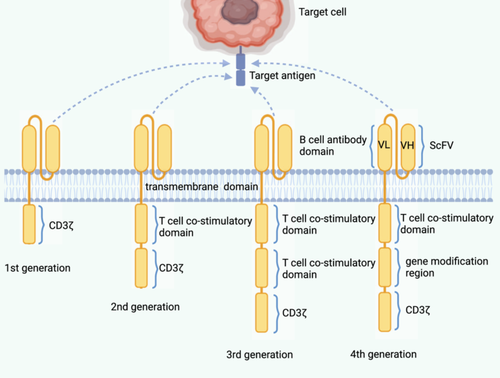MedComm-Future Medicine | Current progress in chimeric antigen receptor T-cell therapy for malignant tumors

Open the phone and scan

The chimeric antigen receptor (CAR) structure of four generations. The development process and structural changes of CAR-T cells from the first generation to the fourth generation. The arrow points to an example of binding to the target antigen on the surface of the target cell. Figure 1 is created with BioRender.com.
In the realm of malignant tumor treatment, particularly regarding hematologic malignancies, chimeric antigen receptor T-cell (CAR-T) immunotherapy has witnessed remarkable advancements in recent years. This approach involves genetically modifying and engineering a patient's T-cells ex vivo to express a specific CAR, known as CAR-T cells. When these modified cells are reintroduced into the patient, they can specifically recognize target antigens and exhibit highly efficient cytotoxicity against cells expressing these antigens, making them suitable for the treatment of malignant tumors. CD19, which is expressed on the surface of B lymphocytes at different stages of differentiation, has been identified as a suitable target for the treatment of most B-cell lymphomas. CAR-T cells targeting CD19 have demonstrated excellent specificity, cytotoxicity, and persistence in both in vitro and clinical trials, showing tremendous potential for application. However, identifying appropriate targets for CAR-T therapy in solid tumors remains a challenge, leading to limited advancements in this area. This review discusses the mechanisms, applications, limitations, and prospects of CAR-T therapy in hematologic malignancies and solid tumors, aiming to provide directions for future research in this field.
Article Access: https://doi.org/10.1002/mef2.79
More about MedComm-Future Medicine: https://onlinelibrary.wiley.com/journal/27696456
Looking forward to your contributions.


